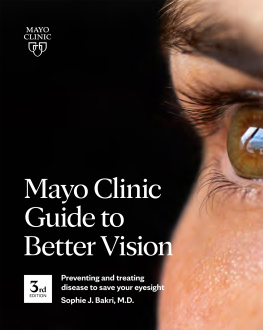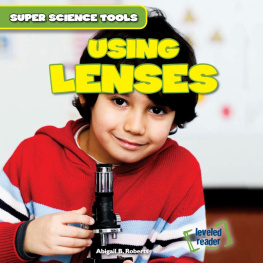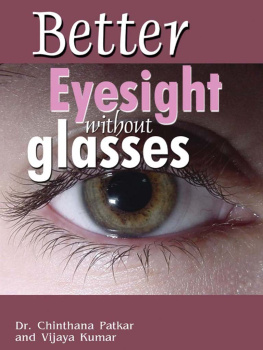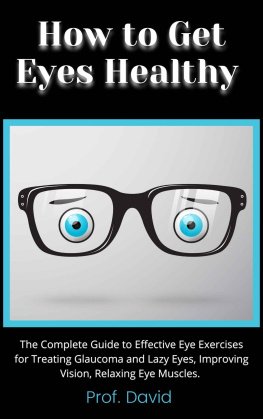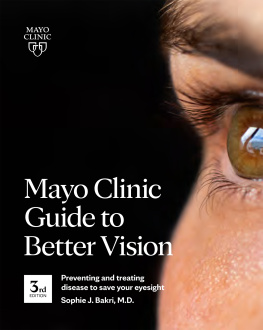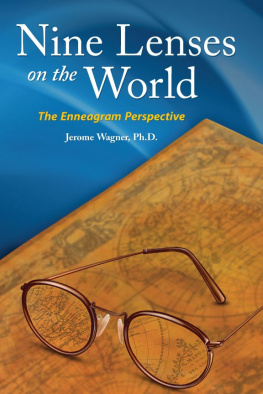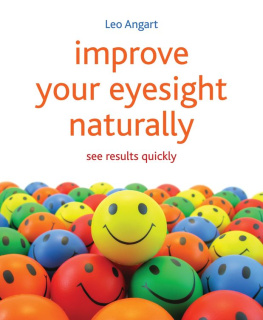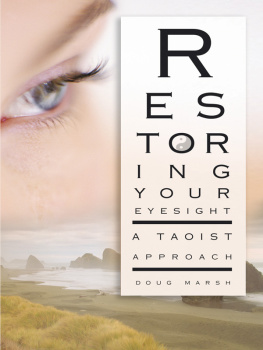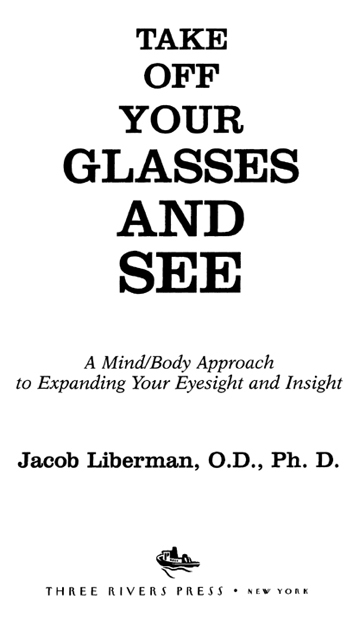Copyright 1995 by Jacob Liberman
All rights reserved. No part of this book may be reproduced or transmitted in any form or by any means, electronic or mechanical, or by any information storage and retrieval system, without permission in writing from the publisher.
Published by Three Rivers Press, New York, New York.
Member of the Crown Publishing Group.
Random House, Inc. New York, Toronto, London, Sydney, Auckland
www.randomhouse.com
THREE RIVERS PRESS is a registered trademark and the Three Rivers Press colophon is a trademark of Random House, Inc.
Library of Congress Cataloging-in-Publication Data
Liberman, Jacob, 1947.
Take off your glasses and see: a mind / body approach to expanding your eyesight and insight / by Jacob Liberman
1. Behavioral optometry. I. Title.
RE960.L53 1995 617.7dc20 94-32101
eISBN: 978-0-307-79536-6
v3.1
This book is dedicated to the child within all
of us who has always been able to see.
It is only with the heart that one can see rightly; what is essential is invisible to the eye.
Antoine de Saint-Exupry,
The Little Prince
Contents
List of Illustrations
The Eyes as Extensions of the Brain
Eye Exercises
Swinging Procedure
Palming Procedure
Position of Stickers on Window for Passive Seeing
Tibetan Wheel
Standard Eye Chart
The Reading Table
Look Up! Bookmark
Pinhole Glasses
The Electromagnetic Spectrum
Light Passing Through a Prism
The Arrow Chart
Colored Arrow Chart Instructions
Continuous Calculation Chart
Acknowledgments
Special Acknowledgment
Id like to offer an especially heartfelt acknowledgment and thank-you to Rose Brandt for her friendship and loving support throughout the writing of this book.
Her exquisite personal sensitivity, combined with her skill as a writer, allowed her to transform my spontaneously expressed feelings and ideas into the content of this book.
As a person who has transformed her own vision, Roses ideas, experiences, and suggestions are sprinkled throughout the text. Her friendship and contributions to this project have been invaluable to me.
Acknowledgments
This book is a compilation of many personal experiences that over the last twenty years have been inspired and nurtured by the influence of many close friends and respected colleagues.
I wish to deeply acknowledge my colleagues Ray Gottlieb, Robert Michael Kaplan, Elliott Forrest, Bruce Rosenfeld, Larry Jebrock, Sam Berne, Marc Grossman, Amorita Treganza, Robert Pepper, Simon Grbevski, and Peter Fairbanks for their loving support. Id also like to acknowledge the courage and pioneering insights of Larry Dossey, Bernie Siegel, and Deepak Chopra.
Id also like to thank my wonderful friends for their support and guidance over the years: Sky and Rainbow Canyon, Herb Ross, Paul and Grace Durga Lowe, Rose Kahn, Buzzy and Gayle Gordon Kaufman, Ron Henry, Terry and Suzanne Levy, Elio Penso, Richard and Marilyn Fendelman, Truth Paradise, Paul and Myra Berger, Stephen Feig, Eva and Herb Finkel, Frank Levinson, Maxine Rose, Alan Lauer, Laura Lea Cannon, Stephen Rose, Patricia Bell, Fred Spanjaard, Tom and Patricia Overton, Michael Greenburg, Brendan and Terry Hart Roberts, Bija Bennett, and Gerry Sindell. Im very grateful to Suzy Hailperin and Cheryl Lynn Russell for their support during my early years of discovery.
To my loving parents, Joseph and Sonia Liberman, and my exquisite children, Gina and Erik Liberman, Id like to express my deep love and appreciation.
I also wish to thank my agent, Loretta Barrett, my editors Erica Marcus and David Groff, and Crown Publishers, for believing in me, giving me the opportunity to share my vision, and guiding me to its completion.
Foreword
This book, which Jacob Liberman originally entitled Seeing, is much more than advice by a former optometrist concerning eyesight. It is a deeply transformational approach to the broader subject of vision.
We understand vision, metaphorically, as perception that extends beyond the currently given. Visionary artists, for example, are those who give us visions of a future that are more than extrapolations from the present. A person of vision is one who sees what is coming and prepares for it appropriately.
In physical terms, vision means eyesight. These two understandings are now merging into a more comprehensive and expanded experience of vision.
The human species is undergoing an unprecedented transition. The experience of what it means to be a human being is changing. Among these changes is the expansion of human perception beyond the limitations of the five senses. As more and more humans begin to gather and utilize data that the five senses cannot provide, the definition of vision is expanding beyond the capability of the eyes to see physical objects.
For example, when a mother sees that her daughter, returning to college, has driven off the road and rises in alarm at the moment that the car begins to roll toward trees, she is experiencing a vision that does not originate in her physical eyes.
When a man on an operating table, deeply anesthetized, sees the procedures that his surgeons and nurses are performing on him, and the color of the socks that they are wearing, he is using a vision that is not limited to what his eyes can detect.
This book is about the expanded experience of vision. It is a reflection of and a product of the evolutionary transition that is under way. Jacob Liberman has begun the process of expanding his former disciplinein this case, optometryto encompass the expanded reality of multisensory humans, humans who are not limited in their perception to the five senses.
This same process of expansion is occurring in every aspect of human experience. It is especially noticeable in the sciences, which, until recently, drew their strength from rigorous exclusion of all that is not detectable by the five senses, that is, all that cannot be empirically verified.
Health, for example, is now recognized to be more than physical, and physical health is now acknowledged to have nonphysical roots. The relationship of stressemotional toxinsto physical health is becoming as evident as the relationship of physical toxins to physical health.
The purpose of this book is to establish the larger context of vision in which eyesight occurs. It is of value to every individual whose awareness of himself or herself is expanding beyond identification with his or her physical capabilities, and not only to those who wear glasses.
It is the natural development of a discipline that concerns itself with vision. It establishes in the terms of this discipline the same expansion beyond physical circumstances that will soon characterize every human activity.
The ideas that Jacob Liberman shares improve not only vision, but also eyesight. It is this aspect of the book that has inspired its title. I wore glasses from grade school until reading this book. I do not wear them now, except to drive, even though I previously experienced headaches, which I associated with eye strain, whenever I took them off for more than half an hour. The unaided visual acuity of both of my eyes combined improved from 20/70 to 20/60one line on the eye chartmerely by following Jacob Libermans advice: Close your eyes, inhale. Exhale, softly, and open your eyes gently. Do not look at the chart. Let the chart look at you. Dont try to grab a line with your mind. Look at one letter, and let it come into focus.


